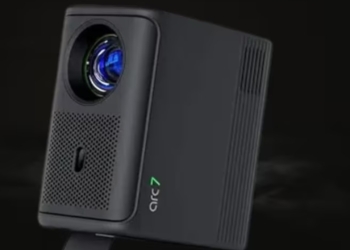Wearable technology is undergoing a radical transformation, as new devices and features are emerging to cater to the diverse needs and preferences of consumers. From wristbands to smart rings, from earwear to smart glasses, wearable devices are becoming more versatile, fashionable, and functional. In this article, we will explore some of the latest trends and innovations in the wearable tech industry, based on an interview with Saket Gaurav, CMD of Elista, a leading smart ring manufacturer.
Wristbands: Beyond fitness tracking to health monitoring and smart home control
Wristbands are one of the most popular and widely used wearable devices, as they offer a range of functions such as fitness tracking, notifications, payments, and more. However, wristbands are also evolving to provide more advanced and comprehensive health monitoring features, such as ECG, blood oxygen level, body temperature, stress, and sleep quality. These features help users to keep track of their vital signs, prevent potential health risks, and improve their well-being.
Wristbands are also becoming more integrated with the smart home ecosystem, allowing users to control their appliances, lights, security systems, and more with a simple gesture or voice command. For instance, the Xiaomi Smart Band 8 Pro, which was launched at MWC 2024, supports over 150 sports modes, health monitoring features, and smart home control. The device also has a high-resolution display, fast charging, and NFC capabilities.

Smart rings: The fusion of technology and fashion
Smart rings are one of the most innovative and stylish wearable devices, as they combine the functionality of a smartwatch with the elegance of a ring. Smart rings are designed to be discreet, comfortable, and customizable, offering users a seamless and personalized experience. Smart rings can perform various functions, such as notifications, payments, fitness tracking, health monitoring, and more.
One of the leading players in the smart ring market is Elista, which offers a range of smart rings with different designs, materials, and features. Elista’s smart rings are equipped with a high-performance chipset, a biometric sensor, a haptic motor, and a wireless charger. Elista’s smart rings can measure heart rate, blood oxygen level, body temperature, and stress level, and provide real-time feedback and suggestions. Elista’s smart rings also support NFC payments, smart lock access, and gesture control.
Earwear: The rise of truly wireless stereo and smart audio
Earwear is another fast-growing segment in the wearable tech industry, as more consumers are opting for wireless and smart audio devices. Earwear devices can offer high-quality sound, noise cancellation, voice assistance, and more. Earwear devices can also track various health and fitness parameters, such as heart rate, calories burned, steps taken, and more.
One of the most popular types of earwear devices is the truly wireless stereo (TWS), which are earbuds that connect wirelessly to each other and to the smartphone. TWS devices offer convenience, comfort, and portability, as they eliminate the need for wires and cords. TWS devices also come with various features, such as touch control, water resistance, and ambient mode. Some of the top TWS brands in India are BoAt, Noise, Fire, and Oppo.
The future of wearable tech: More innovation, personalization, and integration
The wearable tech industry is expected to grow further in the coming years, as new devices and features are introduced to meet the changing consumer demands and expectations. The wearable tech industry will also witness more innovation, personalization, and integration, as wearable devices become more versatile, fashionable, and functional.
Some of the emerging trends and technologies in the wearable tech industry are smart glasses, smart clothing, smart tattoos, and brain-computer interfaces. These devices will offer new ways of accessing and interacting with digital information, enhancing the user experience and productivity. The wearable tech industry will also see more collaboration and convergence with other sectors, such as healthcare, education, entertainment, and gaming, creating new opportunities and possibilities.



















